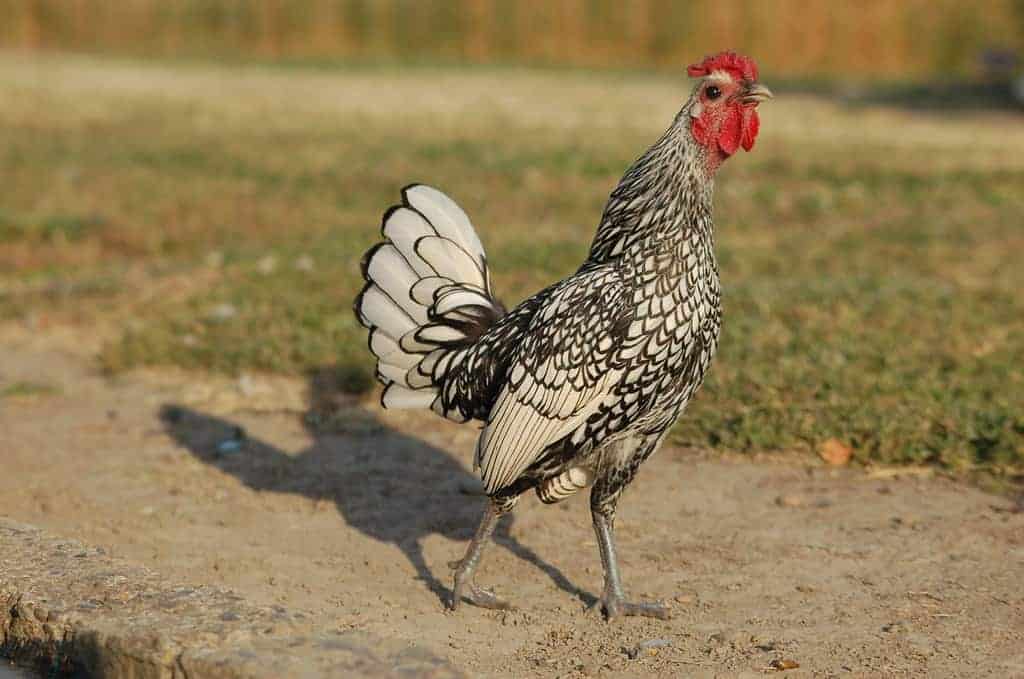What Causes a Bantam Chicken?Bantam chickens are a unique and popular type of small chicken loved by backyard chicken keepers But what exactly causes a chicken to be a bantam? The answer lies in genetics.
Bantams are essentially miniature versions of standard-sized chickens with mature weights around 1-2 pounds compared to 5-8 pounds for full-sized chickens. There are over 200 recognized bantam breeds, and most large chicken breeds have a bantam counterpart.
While some think bantam chickens have dwarfism, they are not technically dwarfs. True genetic dwarfism in chickens is caused by a sex-linked recessive gene called dwB that inhibits skeletal growth. However, the genes involved in creating different bantam breeds vary.
Bantam Chicken OriginsBantams originated in the port city of Bantam in Java, Indonesia. British sailors visiting the port in the 1800s acquired some of the local small chickens They took them back to Europe where bantam breeds were refined through selective breeding.
Bantam breeds fall into three main categories:
-
True Bantams: Naturally occurring miniature breeds with no large counterpart. Ex: Japanese, Sebright
-
Miniature Bantams: Miniaturized versions of a standard breed. Ex: Bantam Cochin, Bantam Orpington
-
Developed Bantams: Created from crosses between true bantams and/or miniatures. Ex: Belgian d’Uccle, Pekin
While some true bantams occurred naturally, most modern breeds were developed through human selective breeding. By choosing birds with desired traits like small size and crossing them for several generations, bantam versions of many large breeds were created.
Genetics Behind Bantam Chickens
So what specific genes cause the smaller size of bantams? Research has uncovered that various genes are responsible depending on the breed, and likely involve multiple genes working together.
For example, in one study comparing the genomes of standard Cochins versus bantam Cochins, over 100 genetic variants were found that may contribute to the bantams’ smaller size. No single dwarfism gene is at play.
Rather than one simple dwarfism gene, multiple genes regulating growth, metabolism, skeletal development, and more are altered to create diverse bantam breeds. Selectively breeding birds with the desired combination of these genetic traits produces new bantam breeds.
Interestingly, when different bantam breeds are crossed, the chicks often exceed the size of the parent birds. This demonstrates that each bantam breed has its own distinct set of genetic contributors to small size.
True Bantams vs Miniature Bantams
While miniature bantams are shrunken versions of large fowl, true bantams have no large counterpart. True bantams likely originated from crosses between wild jungle fowl species. Their small size was naturally selected for survival in their native environments.
The Belgian d’Uccle, Japanese, and Sebright are examples of true bantams. True bantams tend to be on the smaller end of the bantam spectrum, with mature weights around 1 pound or less.
Miniature bantams like the Cochin, Polish, and Silkie reached their petite size through selective breeding alone, not natural selection. Miniatures are generally larger than true bantams, averaging 1.5-2 pounds at maturity.
Caring for Bantam Chickens
Despite their small size, bantams need much of the same care as full-sized chickens. However, a few considerations for their smaller stature include:
-
Smaller housing space requirements
-
Lower roosts, feeders and waterers they can easily reach
-
Added protection from predators
-
Gentle handling to avoid injury
-
Separation from standard sized chickens to prevent bullying
The most significant difference is diet. Since bantams eat less than full-sized chickens, they require about 1/4 to 1/3 less feed. They should not be overfed.
With their big personalities packed into tiny bodies, bantam chickens make a fun and fulfilling addition to any backyard flock! Their origins may be miniature, but their appeal to chicken lovers worldwide is anything but small.

Bantams Poop Less
Because they eat less than the larger chicken breeds, bantam chickens poop less. That may be a disadvantage for someone who composts chicken bedding to fertilize a garden. But for many chicken keepers, poop disposal poses a problem that is significantly reduced by keeping bantams.
Bantams Make Great Pets
Since they require less space, eat less, and poop less, bantams are easier to care for than any of the larger breeds, so they make wonderful pets. That they are both good natured and easy keepers appeals to first-time chicken keepers who find bantams more user-friendly than the larger breeds.
Bantam Chickens Breeds, Egg Laying, Size and Care Guide
FAQ
What makes a chicken a bantam?
Bantams tend to be a quarter to half the size of a standard-size chicken. According to the American Bantam Association, there are over 400 varieties of bantams, and bantams can be found in different categories.
Are all pekin chickens bantams?
They are a breed that doesn’t come in both standard or Bantam like other breeds, they are known as true Bantams which means they only come in Bantam. A unique feature of a Pekin is the amount of feathers that cover and hide their feet and legs and that the ideal Pekin will be round, almost like a soccer ball.
What are the disadvantages of bantam chickens?
- They are a quarter of the size of a regular chicken and they might not mix well in a large fowl flock. …
- They can have a “Napoleon Complex” which can actually show aggressive tendencies much bigger than their size in a mixed size flock.
- They are usually very broody.
What is the average lifespan of a bantam chicken?
The average lifespan of a bantam chicken is typically 5 to 8 years, but some can live significantly longer, even past 10 years, with proper care and good genetics.
